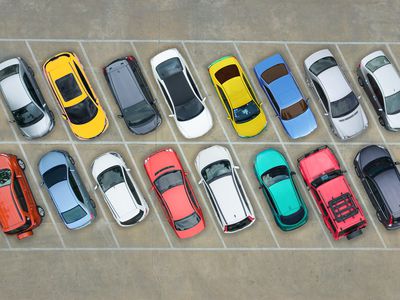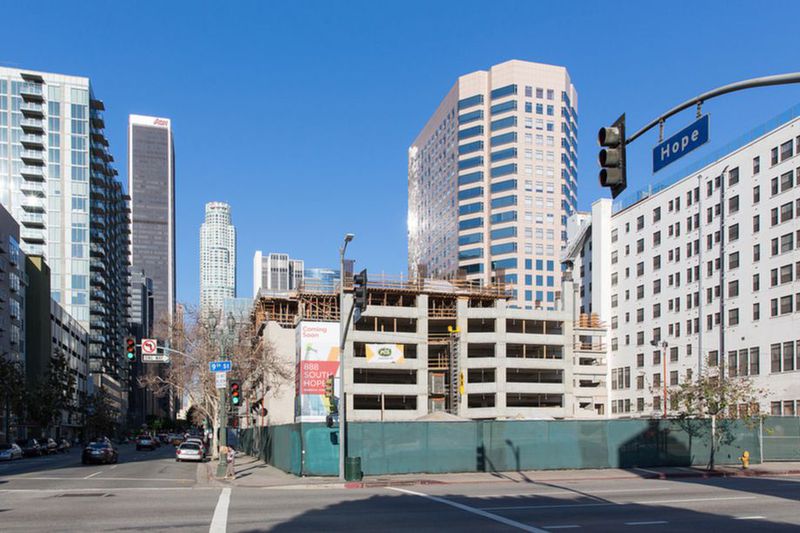
LA’s parking crisis is fueling its housing crisis
An estimated 14 percent of Los Angeles County’s land is devoted to parking, a number that feels both astoundingly inflated and painfully accurate. Not only does the promise of cheap and plentiful parking encourage more driving, lots are making the cost of building housing more expensive and eating up desirable land that could be used far more productively. Parking—or, rather, the archaic city rules around parking requirements called parking minimums—is destroying LA.
A new Vox video uses this story about Apple’s new campus as an outrageous example of parking minimums gone wrong. The headquarters is home to 14,000 employees, but due to Cupertino’s rules, Apple was required to build 11,000 parking spots. That works out to more parking space than office space. Even worse, Apple’s own data shows that 28 percent of its employees don’t drive to work at all.
For decades, American cities have been forcing developers to build parking as part of their projects, and no one knows more about that than Donald Shoup, a UCLA urban planning professor and author of the book The High Cost of Free Parking, who has followers who call themselves Shoupistas. In the video, he makes a very eloquent case for the way parking—specifically free parking—has decimated U.S. cities.
 HunterKerhart.com | Curbed LA Flickr Pool
HunterKerhart.com | Curbed LA Flickr PoolLA’s parking crisis in particular is what’s fueling its housing crisis. A widely shared Reddit post by a multifamily residential architect claims parking minimums are the reason new affordable housing is so hard to build.
In the city of Los Angeles, any new building with more than three units must have its own full-sized, dedicated parking space for each unit, adding about 375 square feet per unit to the project (the architect’s estimate includes not just the 330 square-foot space itself but access to the street). And with land costs at a premium, many developers need to add floors or dig underground just to add parking, which can get pricey.
In the end, a new, hypothetical 800 square-foot apartment actually requires 1,175 square feet of space, with a full one-third of it devoted to parking. “So not only is 32 percent of your apartment just for your car and otherwise useless,” reads the Reddit post, “but it’s also by far the most expensive part of that apartment to build.”
So when developers need 32 percent more space and money just to accommodate vehicles, it’s not surprising that the prices for building housing will go up. Those costs then get passed along to residents: Nationwide, an estimated 17 percent of rent is paying just for parking spots. And if you don’t have a car, and don’t want a spot, too bad—most landlords won’t let you unbundle the costs. Similar rules and restrictive city policies apply to small businesses.
 Diego Galtieri
Diego GaltieriShoup’s recommendations for fixing LA’s parking problem were echoed in a Los Angeles Times op-ed written by Ethan Elkind and Mott Smith in the wake of a parking summit held by the Council of Infill Builders at City Hall in May.
The summit’s report, entitled “Wasted Spaces,” drills down many solutions but here are the two big takeaways: In addition to introducing dynamic pricing, which raises the cost of on-street parking based on demand, the city should immediately reduce or eliminate all off-street parking requirements for any new development projects.
If this sounds impossible for a place like LA, consider this: Mexico City, which, it could be argued, is just as big, sprawling, and car-centric as Los Angeles, just got rid of parking minimums completely. Instead, the city is instituting parking maximums, and developers who want to build over the allotted amount will be charged, with funds going to support public transit. If the the largest city in North America is doing it, why can’t we?
There are a few local efforts underway to address LA’s parking affliction. Certain transit-oriented developments, including a mixed-use corridor in Chinatown and a pedestrian-focused one in Atwater Village, have removed or reduced parking requirements as part of special plan exemptions. Neighborhoods in downtown are improving the existing on-street parking experience, including gathering data to prevent drivers from endless circling that makes up to 34 percent of traffic at certain times of day, according to Shoup. Perhaps Santa Monica’s new downtown plan is the boldest of all: It’s the first city in the region to propose eliminating parking minimums completely.
